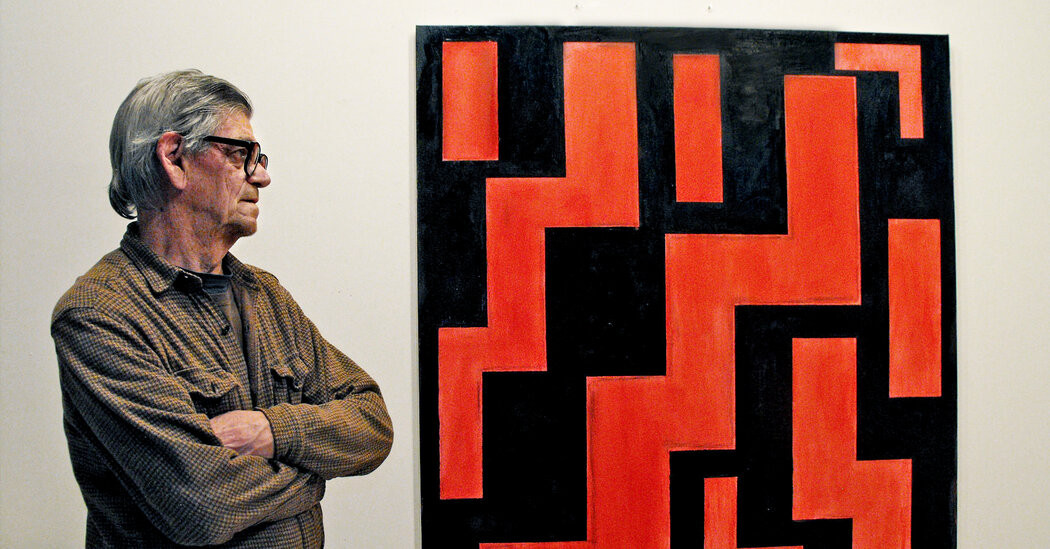

He spent a lifetime patiently excavating the problems and possibilities of the painted surface — in terms of color, texture, process and space.
Like his paintings, Thornton Willis was unassuming but indomitable.
Asked by an interviewer in 2019 how he had felt about movements, like Minimalism and Conceptualism, that threatened to replace his medium with newer approaches, Mr. Willis replied, “I just kept painting,” before adding, with characteristic humor and modesty, “So did a lot of other people, though.”
What he was painting — or, in a sense, defending — was a unique brand of geometric abstraction imbued with the energy, personality and intense material focus of the midcentury New York School.
Beginning with horizontal stripes and proceeding through zigzags, wedges, lattices, triangles and crenelated shapes, often rendered on very large canvases, Mr. Willis spent a lifetime patiently excavating the problems and possibilities of the painted surface — in terms of color, texture, process and space.
His first well-known series, which he called “Slat” paintings, was made on the floor with four-inch paint rollers. For a few years in the 1970s, he gained widespread recognition and success with his wedges — upright, mesa-like shapes reminiscent of box-cutter blades. Then he dropped them in favor of overlapping lines and patterns of triangles that evoked isometric drawing. However the details evolved, his interest in creating balance and tension out of nothingness, in converting his own passing emotions into colors and brushstrokes, never wavered.
“In a sense, I’ve been painting the same painting since I started,” he suggested in the 2009 documentary short “Portrait of an American Artist,” directed by Michael Feldman. “It’s like each painting is still sort of part of the painting before. It just seems somewhat impractical to work on the same actual canvas for an entire lifetime, and so you sort of move on — but each painting is kind of a segue into the next.”

![[GOOD PRESS] ON[GOOD PRESS] ON](https://georgemagazine.com/wp-content/uploads/2024/08/16389056566437433941_2048-300x300.jpeg)

